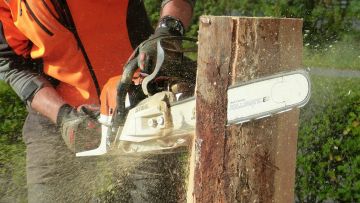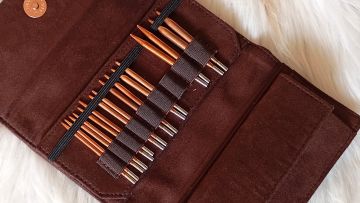Choosing the right chainsaw pants for cold weather can be challenging, but the right gear can significantly enhance your safety and comfort. High-quality chainsaw pants provide the necessary protection against chainsaw-related injuries while ensuring you stay warm in cold conditions. Companies like Husqvarna and Clogger offer clothing with reinforced knees and ventilation, designed for both cold and hot climates.
When selecting chainsaw pants, assess the material and design features that emphasize protection and comfort. Models that offer full-leg coverage, unlike standard chaps, can provide superior safety, especially in harsh weather conditions. For example, Clogger’s Zero chainsaw pants are renowned for their lightweight design and durability.
In cold weather, it’s crucial to choose gear that keeps you insulated without compromising on safety. Look for options with added layers or lining to provide adequate warmth. Durable and thoughtfully designed chainsaw pants make a significant difference in keeping you protected and comfortable during long hours of operation.
Key Takeaways
- High-quality chainsaw pants are essential for safety and comfort in cold weather.
- Choose pants with full-leg coverage and durable design features.
- Opt for lined or layered pants for insulation against the cold.

Understanding Chainsaw Pants and Safety Standards
Chainsaw pants are essential for ensuring safety while operating chainsaws, especially in cold weather. Key aspects include differentiating these from chaps, understanding safety certifications like OSHA and ANSI, and knowing the materials used for optimal protection.
Differentiating Chainsaw Pants and Chaps
Chainsaw pants are standalone garments, providing complete leg protection with integrated cut-resistant layers. Unlike pants, chainsaw chaps are attachments worn over regular pants. This means chaps can be worn and removed more easily, making them suitable for occasional usage.
Pants generally offer better coverage and are more secure. Chaps cover only part of the leg, often leaving gaps that might expose the wearer to injury. Therefore, for cold weather and continuous use, chainsaw pants might be a more reliable option. This comprehensive coverage enhances protection and comfort, especially when working for extended periods.
Safety Certifications and Compliance
Ensuring chainsaw pants meet safety standards is crucial. Key certifications include ASTM F1897, ANSI Z133.1, and OSHA 1910-266. These regulations establish the minimum criteria for effective protective gear.
Chainsaw pants must comply with these standards to offer adequate protection. The American Society for Testing and Materials (ASTM) sets forth guidelines, ensuring materials can withstand chainsaw impacts. The American National Standards Institute (ANSI) and OSHA regulations also play a critical role in guaranteeing the safety of chainsaw operators. These certifications mean the gear has undergone rigorous testing for durability and effectiveness.
Material Choices and Protection Levels
The materials used in chainsaw pants determine their level of protection. Kevlar and ballistic nylon are common choices due to their high resistance to cutting. Kevlar fibers are known for their strength and durability, making them ideal for chainsaw protection.
Ballistic nylon, another popular option, offers excellent resistance to abrasion and cuts. The protective fabric layers are designed to withstand multiple hits and provide reliable defense against chainsaws. Choosing pants with high protection levels ensures better safety and longevity.
Considerations for materials should include weight and flexibility, ensuring they provide both adequate protection and comfort, especially in cold weather conditions.
Choosing the Right Chainsaw Pants for You
When selecting chainsaw pants, it's essential to consider balancing comfort, protection, and mobility. Additionally, evaluating features tailored for cold weather, assessing overall quality and durability, and considering budget constraints are vital to making an informed decision.
Balancing Comfort, Protection, and Mobility
Chainsaw pants should provide maximum protection without compromising on comfort and mobility. Choosing pants with an adjustable waist ensures a better fit and enhances comfort.
Look for materials that offer breathability while still providing cut resistance. The pants should allow ample movement, especially around the knees and hips, to avoid restricting the operator's actions. Pockets and straps need to be strategically placed so they don’t hinder movement or make the pants feel bulky.
Assessing Features for Cold Weather
Chainsaw pants must include features that enhance comfort in cold conditions. Insulation is a key aspect; look for pants that have multiple layers of fabric providing warmth without adding too much weight. An adjustable waist and cuffs can help seal in warmth and keep out the cold air.
Breathability still matters in cold weather since sweating then cooling down rapidly can be dangerous. Consider pants with built-in ventilation options to manage body temperature effectively.
Evaluating Quality and Durability
When considering quality and durability, the construction materials and stitching play a crucial role. Chainsaw pants from reputable brands are known for their robust build and long-lasting fabrics. Look for reinforced stitching and fabrics that offer high abrasion resistance.
Quality pants often feature calf protection and additional padding in critical areas prone to wear and tear. Always check the protection levels indicated by the manufacturer. Pants classified under higher protection levels, such as Class 3, offer substantial protection against injuries from chainsaw operations.
Considering Budget and Value
While chainsaw pants are an essential PPE investment, budget constraints can influence one’s choice. Balancing cost with features like adjustable waist, insulation, and durability is key to finding value. Focus on essential protective features first, then consider additional comfort aspects.
Evaluate the long-term value by considering how often you’ll use the pants and under what conditions. Investing in higher-quality pants might save you money and prevent injuries in the long run. Chainsaw pants with a good blend of protection, comfort, and affordability represent the best value.
By examining these factors closely, one can ensure that their chainsaw pants not only provide necessary protection but also enhance comfort and mobility, especially in challenging cold weather conditions.
Conclusion
Selecting the right chainsaw pants for cold weather is vital for both safety and comfort. Key factors include material choice, insulation level, and proper fit. High-quality chainsaw pants can prevent injuries and enhance work efficiency.
Chainsaw pants should offer a balance of durability and flexibility. Many brands provide excellent options with features tailored for various climates. Prioritize pants with reinforced areas and sufficient ventilation for optimal performance in cold conditions.
















